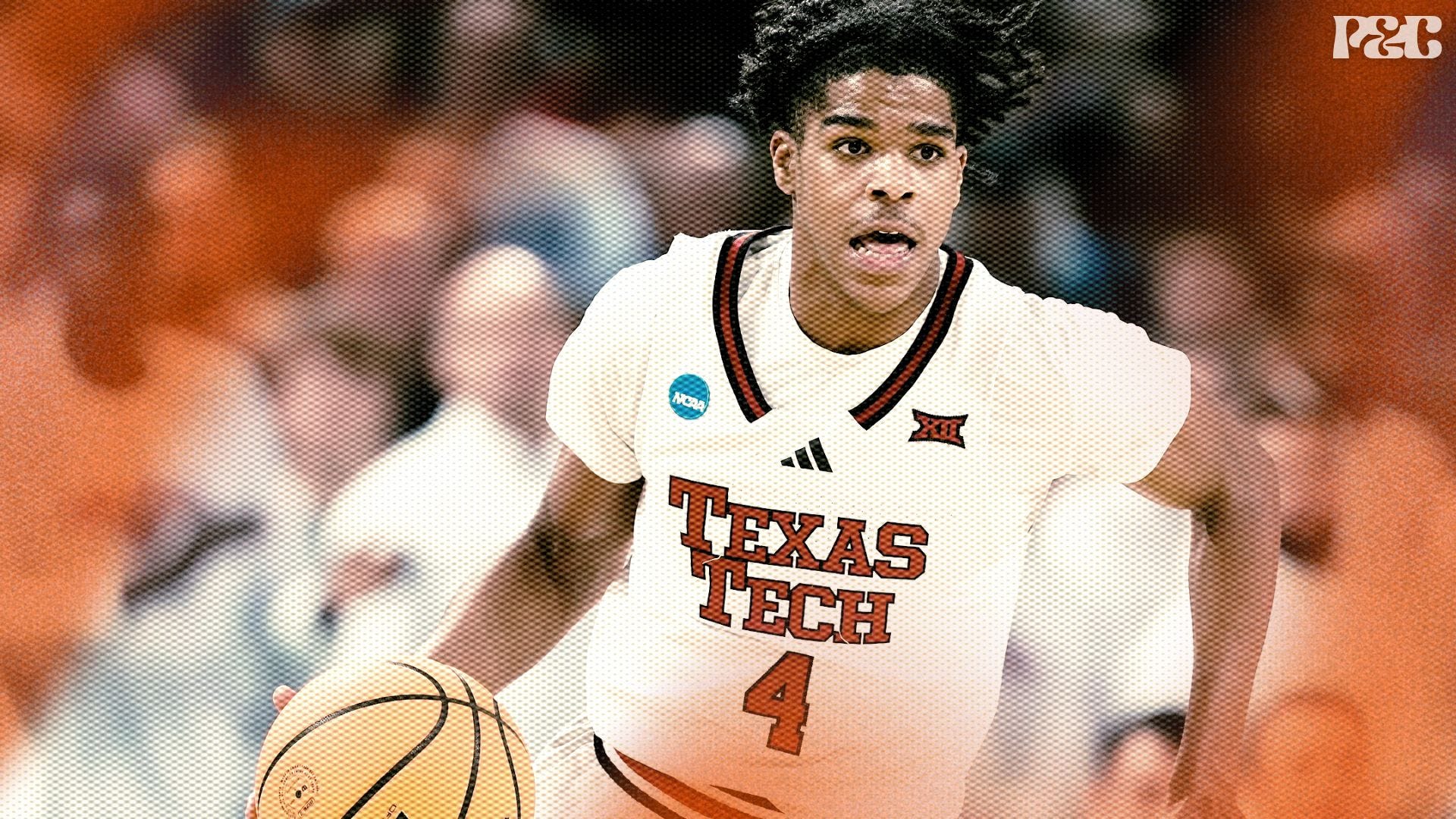Signal Calling: Christian Anderson Jr. is a top-10 pick in plain sight
There's only a few starting caliber guards left under 6 feet, 4 inches, in the NBA. Here's why Christian Anderson has what it takes to join the exclusive club.
It’s a gut feeling, and one that makes my stomach turn, but sophomore Texas Tech point guard Christian Anderson Jr. is just as deserving of a top-10 pick in the 2026 NBA Draft as any guard in this class.
The more traditional point guard class is headlined by the likes of Mikel Brown Jr., Bennett Stirtz and Darius Acuff, all of whom offer elite size and/or athleticism for the position. Anderson offers neither, standing just 6 feet, 2 inches, and having not registered a half-court dunk in his last 46 games (across NCAA and FIBA play).
So what makes him so good?
The same stuff that allows any small guard to slip through the cracks. Anderson is elite on the ball, passing and shooting off a live dribble with ease and poise that would have been considered witchcraft when small guards like John Stockton and Isiah Thomas ran wild.
Through two collegiate games and seven FIBA U19 matchups for Germany this past summer, Anderson has posted averages of 19.2 points per game and 7.0 assists, blitzing defenses with a 66.7% true shooting in that span. The shots are coming from the right spots, too. Anderson has shot 39.3% from 3-point range, taking over 50% of his shots from beyond the arc. On top of that, 59.0% of Anderson’s 3-point attempts are off the dribble.
Anderson’s mechanics are picture-esque, getting good lift and power from his lower body while maintaining a compact upper body, resulting in a quick two-motion release that is hard to contest if you don’t already have a hand up.
Along with his deep-range scoring absurdity off the dribble, which has resulted in 52 points through his first two games of his sophomore season, Anderson functions as a legitimate lead playmaker.
He’s always functioned in a high-volume role, and it’s been justified. He’s currently leading Texas Tech to 1.143 points per possession on pick and rolls, which he’s run with 97th percentile volume nationally. Anderson has advanced poise and pace operating with a screen, especially considering he’ll be 19 years old for the entire season.
Despite lacking elite size, Anderson passes as if he’s seeing the court from a bird’s eye view. What aids his ability to do this is his ability to blend his passing with a live handle. Not needing to pick up the ball to zip the ball around the court is essential for smaller guards like Anderson, as it gives them that extra split second of time between making a play and allowing the defense time to react.
He can pass with either hand, too, feeding rolling bigs or corner shooters with bounces and skips from any spot of the court, on either side. His speed also helps him open passing lanes. A dart around a pick down below the free-throw line triggers a knee-jerk response from help defenders, springing Anderson’s trap by freeing up any of Texas Tech’s many dangerous shooters.
He also throws in some Haliburton-y jump pass wizardry from time to time…
Anderson has everything in his tool belt offensively as a perimeter-centric guard. He’s lightning quick, keeps possession with the ball on a tether, shoots the lights out despite a difficult profile and makes spectacular passes look routine, maximizing a roster of shooters and finishers with Texas Tech.
He’s not without some of the common small-guard issues, though. Anderson is a concerning 1 of 9 on layups in the half-court this season, way up in per-game volume from last season, but down in percentage from his still-below-average 10 of 21 clip from last season. The more pressing issue, though, is the lack of a float game.
Right now, if Anderson’s getting downhill to score, he’s getting all the way down the hill. He’s shot just one runner this season, and while making it, it’s a clear hole in his game, and a patch needed to keep the small guard ship from sinking. The best small guards in the league mix in floaters with their traditional layups, even reversing that formula depending on their proficiency. Darius Garland, Trae Young and just about every guard under 6 feet, 5 inches, in the NBA have kept from sinking by perfecting their float craft.
Granted, it’s much easier to get to the rim than it is in college. Floaters are drop coverage killers, and drop simply isn’t played as often in college as it is in the NBA, which is why someone like Garland — who takes around 200 floaters a season — only took four in his five collegiate games.
Given his touch on his outside shot, as well as from the free-throw line, I have no doubt Anderson will add a floater to his repertoire sooner rather than later. Additionally, Anderson is a clear better finisher than what he’s shown this season. He’ll continue to add weight, add to his finishing bag and ultimately add a floater to his game, making him a far more well-rounded scorer inside the arc.
Overall, it’s hard for me to see Anderson as anything less than one of the elite guard prospects in the 2026 NBA Draft class. He’s just as elite a passer and shooter as any of his peers, and while sacrificing a bit of size and vertical burst relative to those other guards, he more than makes up for it in craft and skill.



